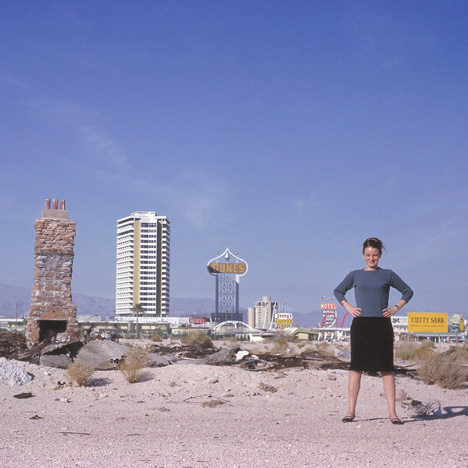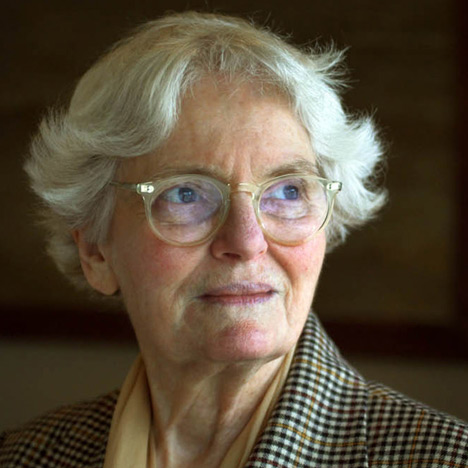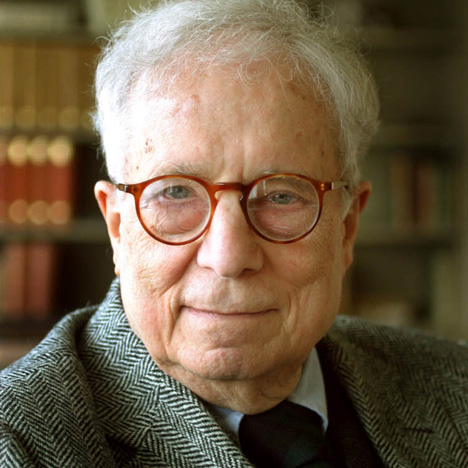
Zaha Hadid joins call for Pritzker to correct Scott Brown "oversight"
News: architects including Zaha Hadid, Farshid Moussavi and Hani Rashid have signed a petition calling for Denise Scott Brown (above) to be recognised as a Pritzker Prize laureate alongside her husband, Robert Venturi, who was awarded the prestigious prize in 1991.
The architects are among 1,720 people who have so far backed the petition demanding that "Denise Scott Brown be retroactively acknowledged for her work deserving of a joint Pritzker Prize".

Awarding the $100,000 prize only to Venturi in 1991 was "an unfortunate oversight," according to Women in Design, a student group at Harvard Graduate School of Design, who organised the petition.
Top: Scott Brown outside Las Vegas in 1966; photograph from the Archives of Robert Venturi and Denise Scott Brown. Above: Denise Scott Brown photographed by Frank Hanswijk
Hadid, who became the first woman to win the prize in 2004 and was on the jury in 2012, signed up to the petition on Sunday morning, according to an announcement on the Pritzker Recognition for Denise Scott Brown page on Facebook.
The petition has also been signed by leading figures including architects Moussavi and Rashid, MoMA senior curator of architecture and design Paola Antonelli, architecture photographer Iwan Baan, Rice School of Architecture dean Sarah Whiting, and Berkeley College of Environmental Design dean Jennifer Wolch.
The petition follows an address last week by Scott Brown in which she described her exclusion from the prize as "very sad". She added: "They owe me not a Pritzker Prize but a Pritzker inclusion ceremony. Let's salute the notion of joint creativity."
Scott Brown, 81, had been a partner at the couple's practice Venturi Scott Brown and Associates (now VSBA) for 22 years when Venturi was awarded the prize, which is considered the most prestigious in architecture. She co-authored their seminal 1977 book Learning From Las Vegas and still works at the practice while Venturi, 87, retired last year.
Below: Robert Venturi photographed by Frank Hanswijk

"Women in architecture deserve the same recognition as their male counterparts," said Women in Design. "Denise Scott Brown's contributions were seminal to her partner Robert Venturi winning the prize in 1991."
"Denise has suffered because she was in partnership with her husband," wrote another signatory, architect Sarah Wigglesworth, on the petition's website. "She was judged by a jury that overlooks collaborative effort and that recognises the male hero. Such bias needs redressing. Denise's work has been seminal - as an architect, a planner, a writer and an educator. What more could anyone ask for?"
Jeremy Till, head of Central St Martins, wrote: "I was at a conference in Washington the day the Pritzker for Venturi was announced. Denise Scott-Brown was the keynote. Her answers to the questions at the end about the award were so dignified, furious and loving (all at the same time) that she should be awarded the Pritzker in her own right just for that."
The Pritzker organisers said Scott Brown's comments and the petition presented them with an "unusual situation". Martha Thorne, executive director of the prize's committee, told Architecture Magazine: "As you may know, the Pritzker Laureate is chosen annually by a panel of independent jurors. Those jurors change over the years, so this matter presents us with an unusual situation. The most that I can say at this point is that I will refer this important matter to the current jury at their next meeting."
The jury of the 1991 Pritzker Architecture Prize mentioned Scott Brown's contribution to Venturi's work in their citation: "[Venturi's] understanding of the urban context of architecture, complemented by his talented partner, Denise Scott Brown, with whom he has collaborated on both more writings and built works, has resulted in changing the course of architecture in this century, allowing architects and consumers the freedom to accept inconsistencies in form and pattern, to enjoy popular taste."
In an interview with ArchDaily in 2011, Scott Brown spoke of her frustration at the way her role was perceived. "It’s hard for both of us — but particularly for me because I get obliterated," she said. "Visitors to our office have tunnel vision toward Bob. I am seen as his assistant, not a professional in my own right, and certainly not a designer. Why that’s anathema would take a book to define."
Zaha Hadid, who last month spoke out against "misogynist behaviour" in British architecture, became the first woman to win the Pritzker Prize in 2004. The only other woman to have won is Kazuyo Sejima, who shared the prize in 2010 with Ryue Nishizawa, her partner at Japanese architecture studio SANAA.
The row threatens to overshadow this year's prize, awarded two weeks ago to Toyo Ito. The prizegiving ceremony for the Japanese architect takes place on 29 May at the John F. Kennedy Presidential Library and Museum in Boston.